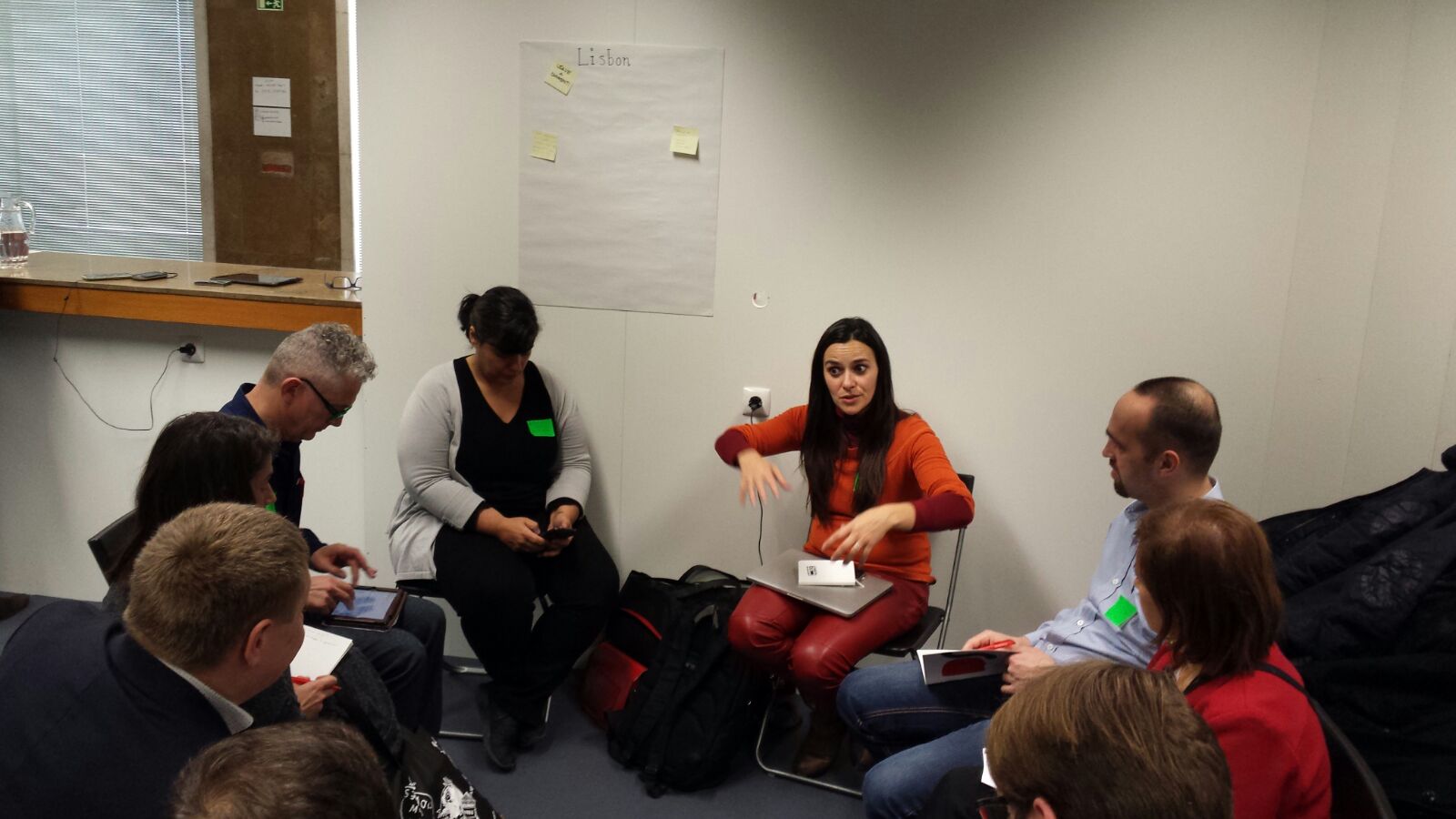Our best practices: what happened in Lisbon?
Edited on
02 October 2018Our transnationl meeting in Lisbon was very interesting, a real moment of exchange and participation. We heard a lot of good practices and good ways of work from all our partners and in this article we want to share their experience whit a short resume of what they're doing in Genoa, Ghent, Paris and Tartu.

Genoa Tourist Tax
In Genoa tourist tax became effective in 2012. In order to spend in a good way the money obtained from the tax, we promoted an agreement between our Municipality and the Chamber of Commerce. The purposes of our action are two: the first one is improve tourist marketing, advertising, communication and events; the second one is improve the urban renewal and the welcoming. Every year we organize 3 meetings with our stakeholders, and in this dates we decide the communication and the marketing strategy we’re going to realize during the year: in the first one we identify our priorities, in the second we present our GuideLines and the last one is to define our final Marketing and Communication Plan for the year. We have 4 meetings during the year to analyze the results with our stakeholders, giving us the possibility to change or correct the points that don’t work efficiently. During these years we promote the destination in order to strengthen its positioning in Italy and in Europe. Another important point was the call to action of our audience to increase the visits of the website visitgenoa.it. The last one was the engagement. In 2017 the total amount of the expected tourist tax is 2,2 million euro. 1,32 millions have been appointed to events, tourist marketing and external communication. With this money, in the last years, we realized digital campaigns, activities on the social networks and we worked as press office with great results. Now we know that Genoa is an important tourist destination and our method of working together with our stakeholders it’s an essential point of our marketing strategy.
 |
Ghent Internal communication
Within the City of Ghent we have a central communication department in combination with communication contact persons who are located in each department of the city. So we use both a centralized as a decentralized method for our communication. The internal communication with the different communication contact persons takes place via electronic newsletters, intranet, bi-monthly print magazine ‘Gent&co’, Yammer (an online free tool), and meetings in person. On those meetings different communication topics are being addressed like website editing, intranet publishing, content of the different print magazines, corporate identity, social media,… . Besides these regular meetings, the city of Ghent organizes the Communication Academy. This is an internal service that the department communication organizes, and is provided to all communication contact persons in order to learn and to stay up to date with regard to communication. The topics vary from setting up a communication strategy over a communication plan to the measurement and evaluation of the campaign. Interested colleagues can subscribe for these classes.
 |
Paris - Semaest Commercial Revitalization
Semaest is a Mixt Economy Society of Paris municipality specialized in commercial revitalization (we acquire premises, renovate them and select the right activity that would be needed in the area). “CoSto” (Connected Stores), meaning “strong” in French, is one of Semaest’s program to sensitize independent small shopkeepers to digital usefulness for their business development. We offer them services (see CoSto Pack): - Free training to social media uses, digital management, web development (2 hours each) - Free experimentations of digital solutions during 6 months through partnerships with startups who need shops to develop their concept (visibility, customer cards, ecological delivery, gift vouchers) - A Facebook account “Commerçants Costo” to exchange good ideas and informations about experimentations, training sessions, … - A portraiture of the shopkeeper in our social media and website costo.paris - Thanks to our ERDF budget in the ITI program in the north-east of Paris, we can afford them a direct service inside the shop: a youngster with no qualifications, for whom we paid a short digital training, go to visit them and help them do the geo-referencing on Google map and create a Facebook page.
Tartu New challenges in the participative budgeting process
Participative budgeting is a democratic process where citizens can directly decide how to spend a part of the public money. The residents make real decisions about real money. In Tartu citizens can decide how the city government should spend 150, 000 Euros, which is about 1% of the investment budget. Tartu has performed participative budgeting for four years already and has gained a lot of experience. Tartu set three goals in regards to participative budgeting. First, to improve understanding of the city budget and its shaping process. The second aim is to improve cooperation between communities. And, the third aim is to find solutions to some practical problems in the city. For example, installing some benches in parks, establishing dog-walking areas, or building exercise parks. While evidence of practical problem-solving can be spotted here and there in the city of Tartu, achieving the first two goals requires a more long-term approach to the process. Although, with each year, an increasing number of citizens have become actively involved in participative budgeting, what concerns city officials is the inactivity of young people both at the idea generation and the decision-making stages. That’s why the city of Tartu is now committed to increasing the involvement of youth in the process. There have already been meetings with representatives of youth organisations to better understand the reasons behind youth inactivity and to come up with strategies and instruments to change the status quo. One key factor contributing to the effort is inarguably a more efficient and purposeful use of social media channels.
Submitted by fvirgilio on
